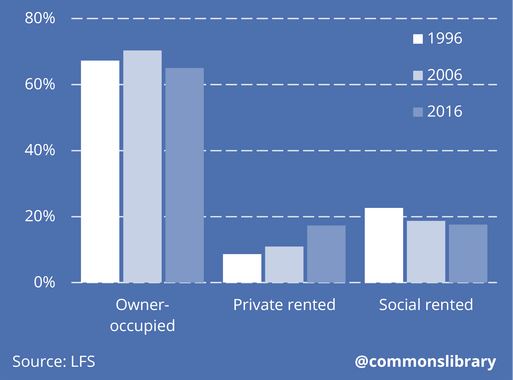November 13th, 2017. Tom Rowlands
Is Planning Permission Being Granted in Areas That Need It Most?

The UK population has seen it sharpest rise in nearly 70 years. Official Office for National Statistics (ONS) figures show an increase of 538,000 people in 2016 to 65.6million – it’s largest ever. Furthermore, London accounts for a significant proportion of this increase.
But are there enough houses to match this growing population?
In short: no.
Understanding Housing Shortage Statistics
According to Home.co.uk there are currently 486,584 houses for sale in the UK with an average asking price of £409,477. It also reports that there are 226,161 properties for rent which cost £1,670 pcm.
More than 700,000 available properties may sound like a large number to many, however some damming statistics have been revealed about the number of people struggling to find a permanent home. For instance, in England alone, since 2010 there has been a 134% increase in rough sleeping and at the end of 2016 there were 119,000 children living in temporary accommodation.
Despite a preference to own, it also appears there is now a higher percentage of people living in privately rented properties than ten and twenty years ago.
 Source: LFS
Source: LFS
@commonslibrary
Which Areas Are Seeing the Greatest Population Growth?
The ‘housing shortage’ has long been publicised in the news and the data appears to back this up, but let’s get specific; where is the housing shortage most prevalent? And is the government’s home building scheme keeping up?
We’ve scoured through Office for National Statistics data and crunched the numbers to find the need to know information on population growth in the UK.

Population growth has been rapid in London with 9 in 10 of the highest increase areas being found here. As the country’s capital, this may not be surprising, but you may find it interesting to learn that all five of the areas that have experienced the highest increases in population between 2006 and 2016 are found in North London, and many are located on the Thames near major business districts.
This promotes the idea that people are striving to live nearer to work, and concurs with our previous post ‘The Average Commercial Property Investment Lot in the City Now Costs £110m’ which talks of how the price of land here is now at an all-time high thanks to increasing demand from numerous sources.
At the opposite end of the scale, the UK local authority that has seen the lowest growth of anywhere in Britain is Kensington and Chelsea. In fact, the area with its own reality show saw its population decrease 5.16% during the same time period.
Do Planning Applications Match Up?
In our recent post ‘Revealed: The Easiest (and Hardest) Places to Get Planning Permission in England’, we reported on the places in England where you’re most and least likely to get your planning permission application approved.
We found that, in some cases, these figures appear to be matching up with population growth figures. However, in others, successful applications are falling behind average (88% of overall applications were successful in 2016/2017).
According to DCLG data, in the year ending 31st March 2017, there were 18 places in England where 100% of major development applications were granted. One of these locations was the City of London which we previously highlighted as the third highest population growth area in the country. However, these facts are making plots in this already highly popular area even more competitive.
Successful planning permission application figures looked as follows for the other four high population growth areas:
Tower Hamlets – 89.86% of major developments, 80.32% of minor developments
Newham – 89.13% of major developments, 60.88% of minor developments
Islington – 79.17% of major developments, 75.03% of minor developments
Hackney – 95.35% of major developments, 79.62% of minor developments
In its 2017 ‘Planning to solve the housing crisis’ Savills Estate Agents spoke of the current property market and the shortage of housing where it is needed most. The report said:
“This means we are not building enough homes in areas where they are most needed to improve affordability and support economic productivity.”
This Presents an Opportunity for Property Developers
If you’re an experienced property developer that is familiar with the planning permission process and what is or is not likely to be approved, these findings could provide some great insights into in-demand areas for your next project.
If you need commercial finance to get your next development off the ground, speak to our experienced team of commercial development finance brokers today by calling 02920 766 565.
Read more:
Is Property Development the New Buy-to-Let?
What Are the Rules Regarding Building on Green Belt Land?
A Beginners’ Guide to Permitted Development Rights
Article By Tom Rowlands
November 13th, 2017
Tom joined Pure Property Finance in 2017 after a career as a Client Wealth Manager, where he spent just under 3 years advising on financial and tax planning. Tom specialises in bridging finance and property development funding, having completed deals ranging from a simple £30K property purchase through to £2m+ mixed-use developments.
See more articles by Tom






